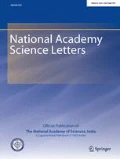Abstract
Terminalia trees are being over exploited because of their medicinal and economical importance leading to loss of valuable genetic resources. The study included morphological variation and characterization of genetic diversity at interspecific level. Genus Terminalia is a complex group having many problems associated with taxonomic identification. Morphologically T. arjuna can be distinguished from other species having winged fruits whereas the fruits of T. catappa are elliptical and tomentose. Fruits of T. chebula are provided with ribs while fruits of T. bellerica are without ribs. Thus different species of Terminalia can be distinguished by characteristic of fruits and sometimes by characteristic of leaves. For the first time comprehensive study was done for estimation and analysis of genetic variation through random amplified polymorphic DNA (RAPD) and inter-simple sequence repeats (ISSR) markers. A total of 12 polymorphic primers (6 RAPD and 6 ISSR) produced 80 polymorphic bands with an average of 7.5 bands per primer. The average polymorphism was 87.97% and five primers were reported to produce 100% polymorphism. Dendrogram based on RAPD and ISSR data grouped four Terminalia species in two distinct clusters. Cluster-I comprised 2 species viz. T. arjuna, T. chebula, while cluster-II comprised two species T. bellerica and T. catappa. Clustering of species was altercating with previous morphological studies.



References
Arora S, Kaur K, Kaul S (2003) Indian medicinal plants as a reservoir of protective phytochemicals. Teratog Carcinog Mutagen 1:295–300
Arora S, Brits E, Kaur K, Kurnar S, Verschacvc L (2005) Evaluation of genotoxicity of medicinal plant extracts by the comet and VITOTOX tests. J Environ Pathol Toxicol Oncol 24:193–200
Kaur S, Arora S, Kaur K, Kumar S (2002) The in vitro antimutagenic activity of Triphala—an Indian herbal drug. Food Chem Toxicol 40:527–534
Sabu MC, Kuttan R (2002) Anti-diabetic activity of medicinal plants and its relationship with their antioxidant property. J Ethnophannacol 81(2):155–160
D’Souza P, Amit A, Saxena VS, Bagchi D, Bagchi M, Stohs SJ (2004) Antioxidant property of Aller-7, a novel polyherbal formulation for allergic rhinitis. Drugs Exp Clin Res 30:99–109
Parkinson CE (1936) Indian Terminalia of the section Pentaptera. Indian For Rec 1:1–27
Srivastava PK, Raina SN, Thangavelu K (2002) Nuclear DNA and fruit (seed) variation in section Pentaptera of genus Terminalia L. Indian For 128:289–302
Srivastava PK (1991) Terminalia: the wonder tree of India. Indian Silk 10:15–20
Dangi B, Jain R, Kachhwaha S, Kothari SL (2012) Assessment of diversity in Terminalia bellerica Roxb. Using morphological, phytochemical and molecular markers. Natl Acad Sci Lett 35(1):135–144
Rao VR, Hodgkin T (2002) Genetic diversity and conservation and utilization of plant genetic resources. Plant Cell Tissue Organ Cult 68:1–19
Biswas S, Kukreti S (1992) Carpological studies-an aid to the identification of Indian trees: Terminalia L. Indian For 118:813–821
Ohri D (1996) Genome size and polyploidy variation in the tropical hardwood genus Terminalia (combretaceae). Plant Syst Evol 200:225–232
Agarwal M, Srivastava N, Padh H (2008) Advances in molecular marker techniques and their application in plant sciences. Plant Cell Rep 27:617–631
Sarwat M, Das S, Srivastava PS (2010) Estimation of genetic diversity and evaluation of relatedness through molecular marker among medicinally important trees: Terminalia arjuna, T. chebula and T. bellerica. Mol Biol Rep. https://doi.org/10.1007/s11033-010-0649-2
Nei M, Li W (1979) Mathematical model for studying genetic variation in terms of restriction endonucleases. Proc Natl Acad Sci 76:5269–5273
Rohlf FJ (1999) NTSYS-PC numerical taxonomy and multivariant analysis system. Version 2.1. Exeter Software, Setauket
Srivastava PK (2003) Tree improvement studies in genus Terminalia Linn. Proc Natl Acad Sci India Sect B Biol Sci 73:95–142
Rao GN, Ramayya N (1984) Morphological and dermotype study of the leaves in six species of Terminalia L. Indian J Bot 7:13–23
Acknowledgements
Thanks to Botany Department, Udai Pratap Autonomous College, Varanasi for providing necessary facilities during the study.
Author information
Authors and Affiliations
Corresponding author
Rights and permissions
About this article
Cite this article
Singh, P., Singh, P. & Singh, M.P. Assessment of Genetic Diversity and Evaluation of Relatedness Through Morphological and Molecular Markers Among Medicinally Important Trees: Terminalia arjuna, T. bellerica, T. catappa and T. chebula. Natl. Acad. Sci. Lett. 42, 155–159 (2019). https://doi.org/10.1007/s40009-018-0698-y
Received:
Revised:
Accepted:
Published:
Issue Date:
DOI: https://doi.org/10.1007/s40009-018-0698-y

